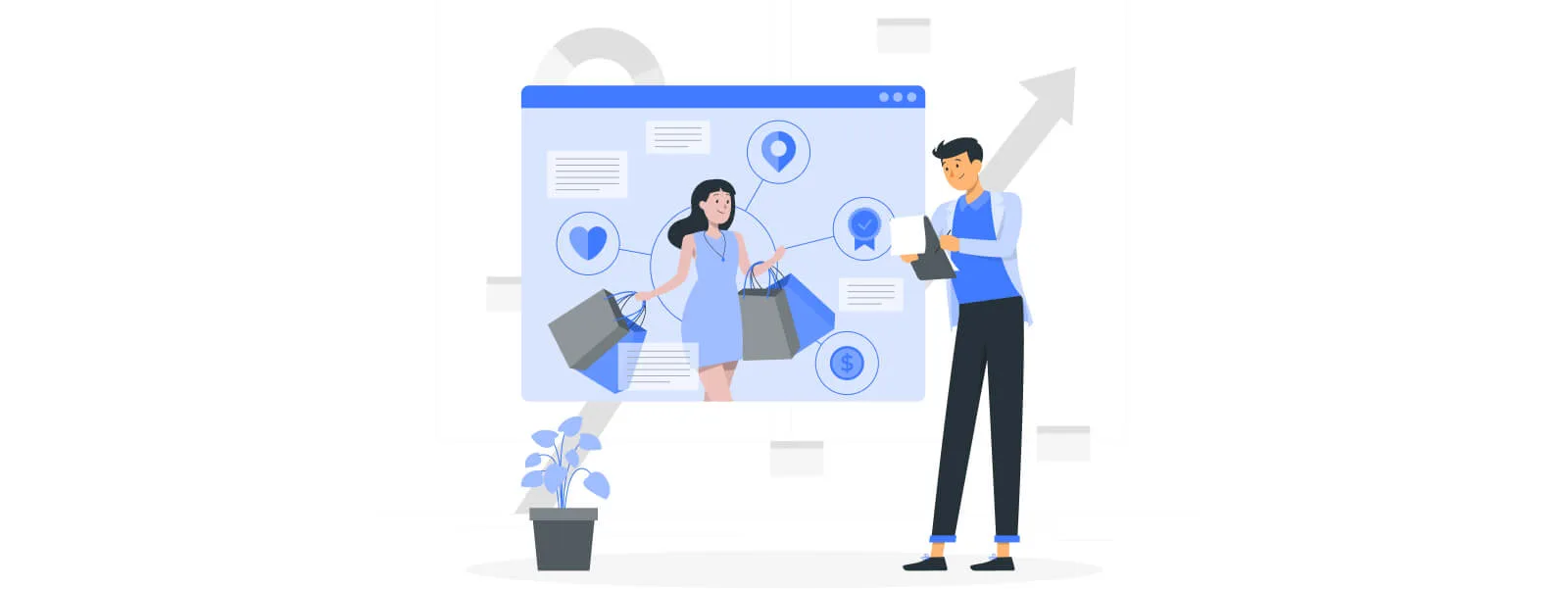Retail Customer Service: Strategy, Benefits & Best Practices
- July 21, 2025
- 15 mins read
- Listen
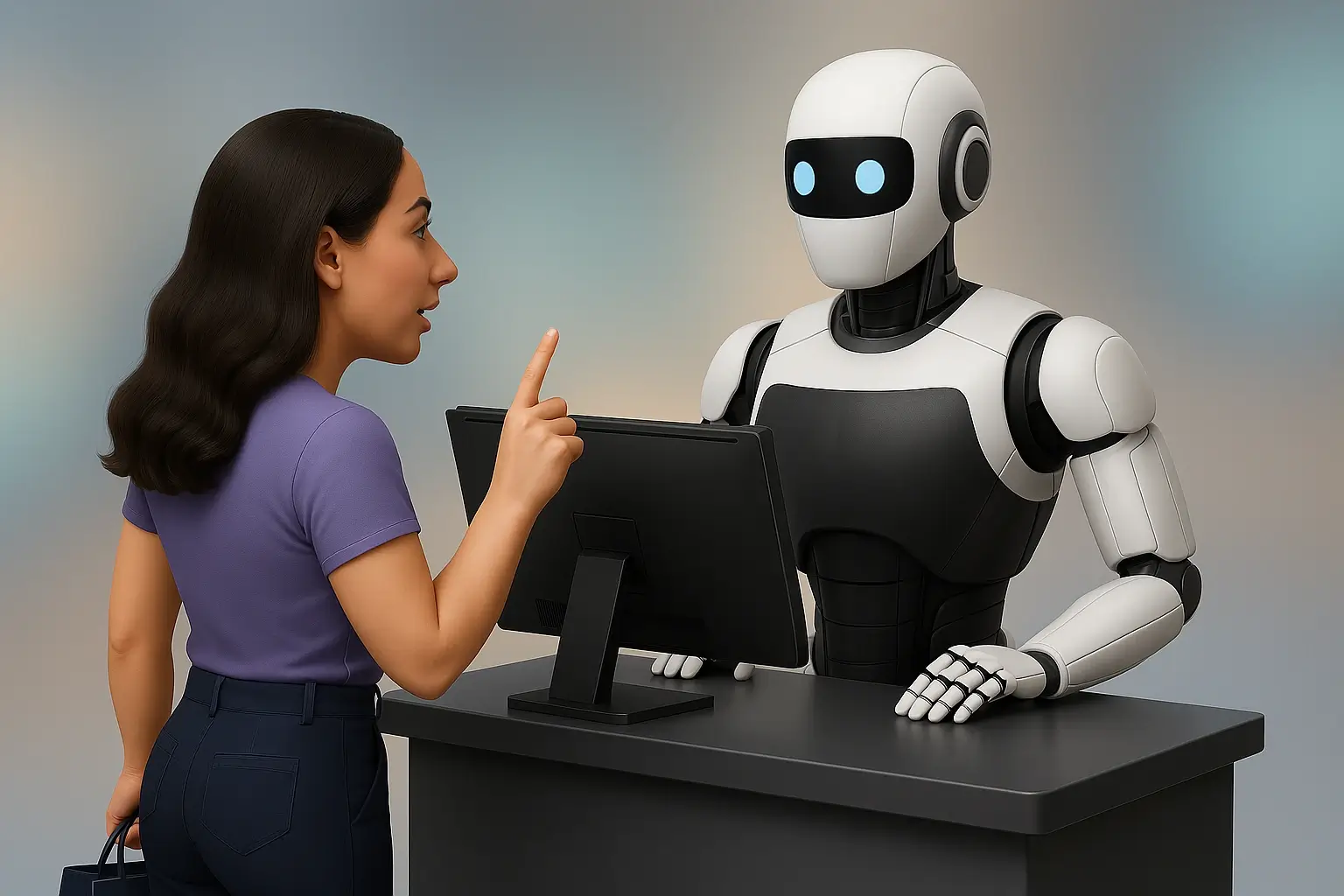
A customer hesitates at your store’s entrance or hovers over the “buy now” button online. In that fleeting moment, what is their next move? Either they will stay or leave, love or loathe. It hinges on something you might overlook: the human touch of your service.
Retail customer service isn’t just a transaction; it’s the art of crafting connections that turn strangers into storytellers who sing your brand’s praises. Salesforce found that 92% of consumers are more likely to buy again after a positive service experience, and that’s no small thing in a world where loyalty is gold.
Why should you care? Because every interaction is a chance to stand out in a sea of sameness. Great service doesn’t just keep customers; it builds a community that fuels your growth.
What is Retail Customer Service?
Retail customer service is the heartbeat of any store, online or offline. It’s the way you greet, guide, and support customers at every step, before they buy, while they shop, and after they leave. Think of it as the smile behind the counter, the quick chat response, or the easy return process that makes customers feel valued.
It’s not just about answering questions; it’s about creating an experience that feels personal and seamless, whether someone’s browsing your website or walking through your store’s aisles.
At its core, retail customer service includes the policies, tools, and people you put in place to solve problems and build trust.
Why does this matter? Because great service turns one-time shoppers into loyal fans who keep coming back. In a competitive retail world, that’s what sets you apart.
Why is Customer Service in Retail Vital?
You’ve put everything into your retail business: great products, a slick website, maybe a cozy store vibe. But let’s be real: if your customer service isn’t on point, it’s like building a house with no foundation.
It’s you making every customer feel like they matter, from the moment they walk in or click onto your site. Get it right, and they’re not just buying.
They’re coming back, bringing friends, and shouting your name from the rooftops.
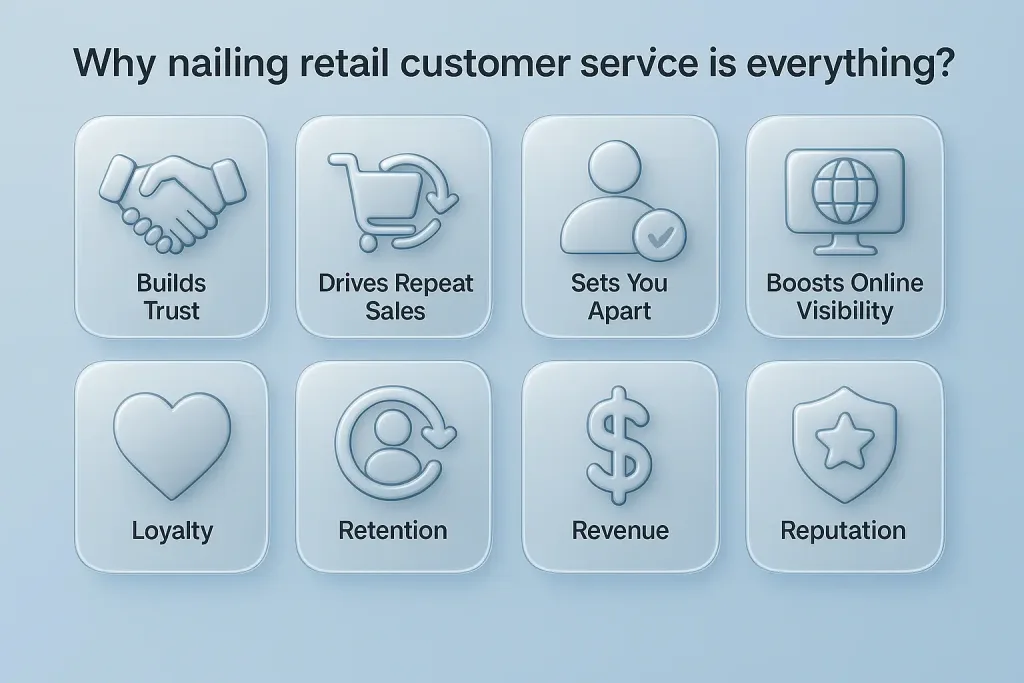
Here’s why nailing retail customer service is everything:
- Builds Trust: When you solve a problem fast or add a personal touch, customers know they can count on you. That trust keeps them choosing you over the competition.
- Drives Repeat Sales: Happy customers spend more. Salesforce says 89% of consumers are more likely to buy again after great service.
- Sets You Apart: In a world of endless choices, your service is what makes your store or site stand out. So, think of it as your secret weapon against giants like Amazon.
- Boosts Online Visibility: Glowing reviews from satisfied customers help your business pop up higher in search results, pulling in new shoppers.
- Loyalty: When you make customers feel valued. Whether it’s a quick chat response or a hassle-free return. They keep coming back. Loyal customers aren’t just one-time buyers; they’re your biggest cheerleaders, spreading the word about your store..
- Retention: Keeping customers is way cheaper than finding new ones. Exceptional service makes people stick around, whether they’re shopping in your store or online. For example, Zappos’ legendary service, like their 365-day return policy.
- Revenue: Happy customers spend more. It’s that simple. Great service encourages bigger purchases and repeat visits. Whether it’s suggesting the perfect add-on or fixing a problem quickly, your service directly fuels your bottom line.
- Reputation: A single review can make or break you. Exceptional service leads to glowing feedback that spreads fast online and off. Those five-star reviews boost your visibility on Google and draw in new shoppers.
Retail Customer Service Examples: Learning from the Best
You want to make your customers love you? It’s all about learning from the pros who’ve nailed it. I’m talking about brands like Le REVE, Amazon, and Zappos, retail giants who’ve turned customer service into an art form.
They don’t just sell products; they create experiences that keep people coming back.
Let’s break down what makes their service so special. So you can steal a few tricks for your own business.
1. Amazon
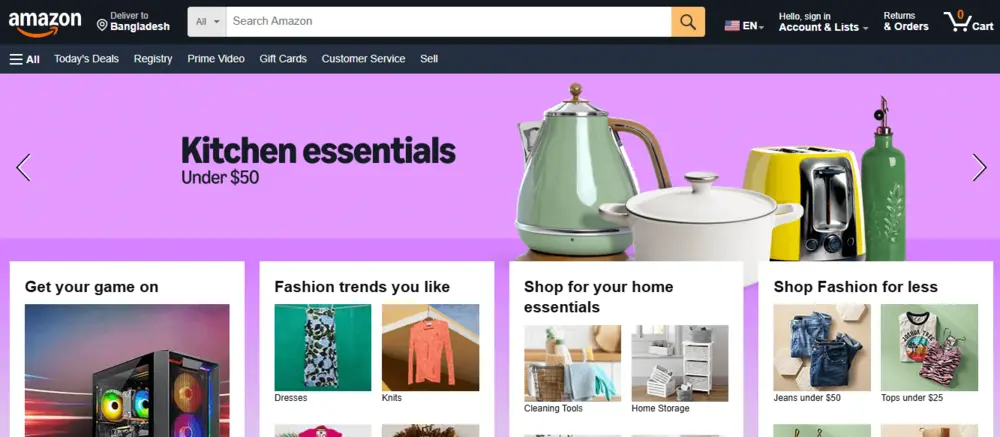
You’ve probably ordered from Amazon and felt how easy it is. So, what is their secret? A customer-first approach powered by data and efficiency.
Amazon’s multi-channel support, think live chat, email, and self-service options, lets you reach them however you want. Their AI, like Alexa, predicts what you need, offering tailored product picks.
Plus, Amazon Prime’s free two-day shipping and hassle-free returns make shopping a breeze. Forbes notes Amazon shoppers praise their ability to “fix every problem” fast, whether it’s a third-party seller or a direct purchase.
That’s why Prime members spend nearly twice as much as non-members, according to a 2021 Forrester report.
2. Le Reve
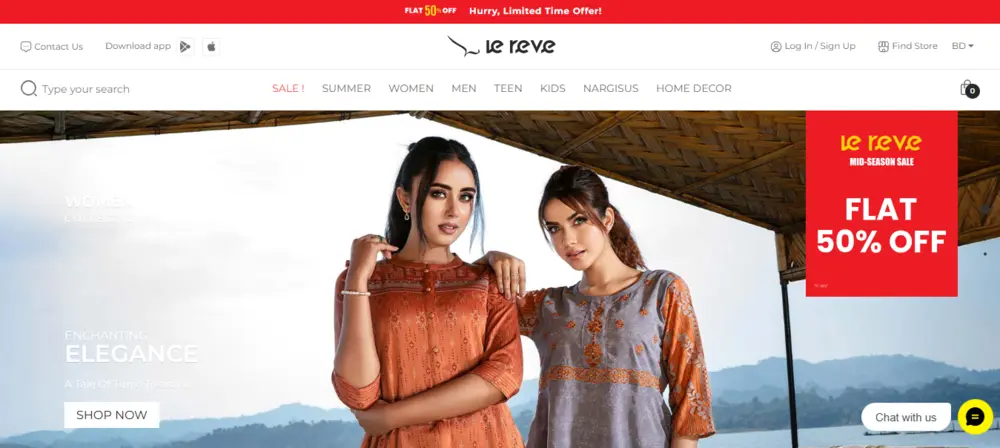
You’re running a retail business, and customers are firing questions at you left and right. Le Reve gets it.
They use REVE Chat’s AI-powered chatbot to handle queries fast, 24/7. Let’s imagine a situation where a shopper asks about product availability at 3 a.m., and the chatbot instantly responds with stock details and personalized suggestions.
It’s like having a super-smart assistant who never sleeps. This tech cuts wait times, keeps customers happy, and frees up your team for trickier tasks. What is the result? Customers feel heard, and you’re not drowning in support tickets.
3. Transcom Digital
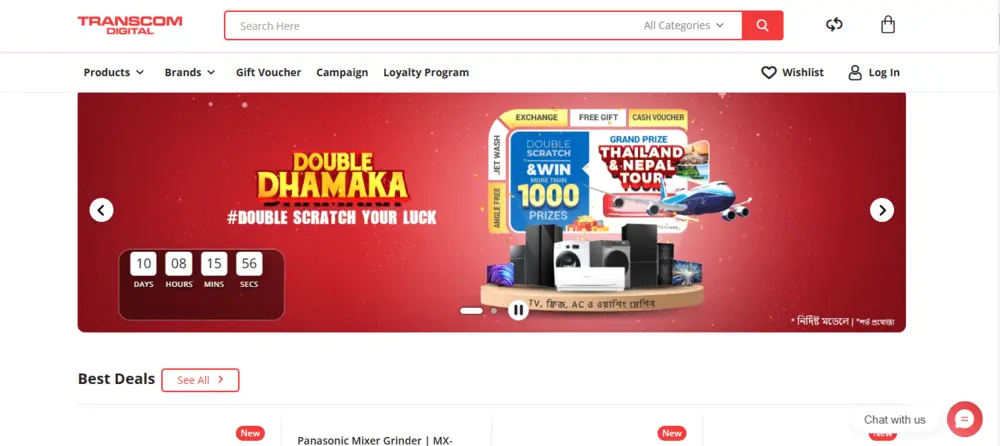
Transcom Digital uses REVE Chat to elevate its customer service across sales, support, and promotions.
For sales and inquiries, they handle showroom visits, B2B deals, new online orders, web orders, and corporate purchases with quick responses via web, Facebook, and WhatsApp, using canned responses for efficiency.
Their after-sales support tackles complaints, delivery times, OTP issues, and service requests with chat tags to route queries fast.
Features like CSAT forms help gauge customer satisfaction, ensuring continuous improvement. Lesson:
Use omnichannel tools like REVE Chat to streamline sales, support, and promotions for a seamless customer experience.
Building a Retail Customer Service Strategy
Do you want your customers to rave about your store or website? It starts with a solid plan. A retail customer service strategy that makes every interaction feel effortless and personal.
You’re not just selling products; you’re creating a system that turns shoppers into loyal fans.
How do you do it?
I’m going to walk you through five key steps to build a strategy that works, whether you’re running a small shop or a global brand.
Let’s make your customer service the reason people keep coming back.
1. Define a Customer Service Vision
First, figure out what you want your customers to feel when they interact with you. Is it trust? Delight? Maybe you want them to say, “Wow, that was so easy!”
Write it down in a clear statement, like: “We make every customer feel valued with fast, friendly, and personalized service.” This vision guides your team and sets the tone.
For example, Target’s vision of “seamless shopping” drives its focus on easy checkouts and helpful staff, making customers feel prioritized.
2. Train Staff on Soft and Hard Skills
Your team is your front line. Train them to listen, stay calm under pressure, and show empathy; those are the soft skills that win hearts.
Hard skills?
Make sure they know your POS system, inventory tools, and how to handle returns like pros.
Nordstrom, for instance, trains staff to personalize every interaction, like suggesting outfits based on a customer’s style.
Well-trained staff turn complaints into opportunities and keep customers smiling.
3. Implement Omnichannel Support
Your customers don’t stick to one channel. They’re on your website, social media, phone, or in-store.
You need to meet them wherever they are. Offer live chat, email, phone support, and even social media responses.
Warby Parker nails this by syncing online and in-store support. So customers get the same great service whether they’re trying glasses virtually or in a shop.
Omnichannel means no one slips through the cracks.
Learn More: Omnichannel Customer Experience: How to Create & Examples
4. Use Technology to Scale
You can’t do it all manually, and that’s where tech comes in.
Tools like CRM systems track customer preferences, while chatbots like REVE Chat’s AI-powered ones answer questions 24/7.
Just think of a scenario where a customer gets instant help at midnight without you lifting a finger.
Sephora uses chatbots to recommend products and CRM to remember customer favorites, creating a personal touch at scale.
These tools save time and make customers feel special.
5. Monitor KPIs to Measure Success
You need to know if your strategy is working, right?
Track key metrics like Customer Satisfaction Score (CSAT) to see how happy customers are or Net Promoter Score (NPS) to gauge loyalty.
For example, Apple tracks NPS to ensure its in-store Genius Bar keeps customers raving. Check these numbers regularly, and tweak your approach if scores dip.
Data keeps you honest and shows you what’s driving results.
Best Retail Customer Service Platform
You’re looking to level up your retail customer service, right?
Choosing the right platform can make all the difference. Turning frustrated shoppers into loyal fans who can’t stop talking about you.
I’ve rounded up the top platforms that nail retail customer service, starting with REVE Chat, which stands out for its powerful, retail-ready features.
Then, I’ll throw in a couple more platforms that give you similar firepower. These tools blend AI, live chat, and ticketing to make your service seamless, whether you’re running a small shop or a global brand.
Let’s dive into what makes these platforms the best for your retail game.
REVE Chat
This is your go-to for retail customer service that feels personal and fast. REVE Chat’s AI-powered chatbot handles FAQs 24/7, like answering “Is this in stock?” at midnight, cutting response times by up to 64%.
It’s live chat lets you connect instantly with shoppers on your website, WhatsApp, or Instagram, guiding them to the perfect product.
The ticketing system organizes every customer issue into one dashboard, so you never miss a beat.
Plus, integrations with Shopify, WooCommerce, and HubSpot let you personalize offers based on customer data, boosting loyalty.
Why’s it the best?
It’s budget-friendly, easy to set up, and scales with your business, making it perfect for retail’s fast-paced demands.
Features like co-browsing (helping customers navigate your site in real-time) and advanced analytics (tracking chat performance) give you an edge in creating standout experiences.
Zendesk
You’ve probably heard of Zendesk. It’s another nice platform. Its AI chatbots automate customer queries, from returns to product questions, freeing your team for complex issues.
The omnichannel setup unifies email, live chat, phone, and social media (like X and WhatsApp) into one workspace, so you can track every customer interaction.
Zendesk’s strength is its 1,000+ integrations (Salesforce, Slack, Shopify) and robust analytics, which help you spot trends like cart abandonment.
Retailers love its no-code Flow Builder for quick setup, but it can be pricey for smaller shops and complex for new users.
Freshdesk
Freshdesk is a solid pick for retailers wanting a user-friendly, AI-driven solution. It’s Freddy AI chatbot handles routine queries across email, chat, and social, reducing ticket volume by automating responses.
The unified dashboard pulls all customer interactions. Think live chat, WhatsApp, or phone into one place, making it easy to manage busy retail seasons.
Features like parent-child ticketing let you break complex issues (like a multi-item return) into smaller tasks for faster resolution.
With a free plan for unlimited agents and integrations like Shopify and WooCommerce, it’s great for growing businesses.
The catch?
Its mobile app isn’t as robust, and advanced reporting requires higher-tier plans.
12 Retail Customer Service Best Practices
Do you want your customers to walk away happy and keep coming back? It’s all about nailing the little moments that make them feel special.
I’m going to share 12 retail customer service best practices that can turn your store or website into the one everyone talks about. These aren’t just ideas. There are proven ways to build trust, spark loyalty, and grow your business, whether you’re a corner shop or a global brand.
Let’s dive in and make your service unforgettable.
1. Leverage Live Chat for Instant Support
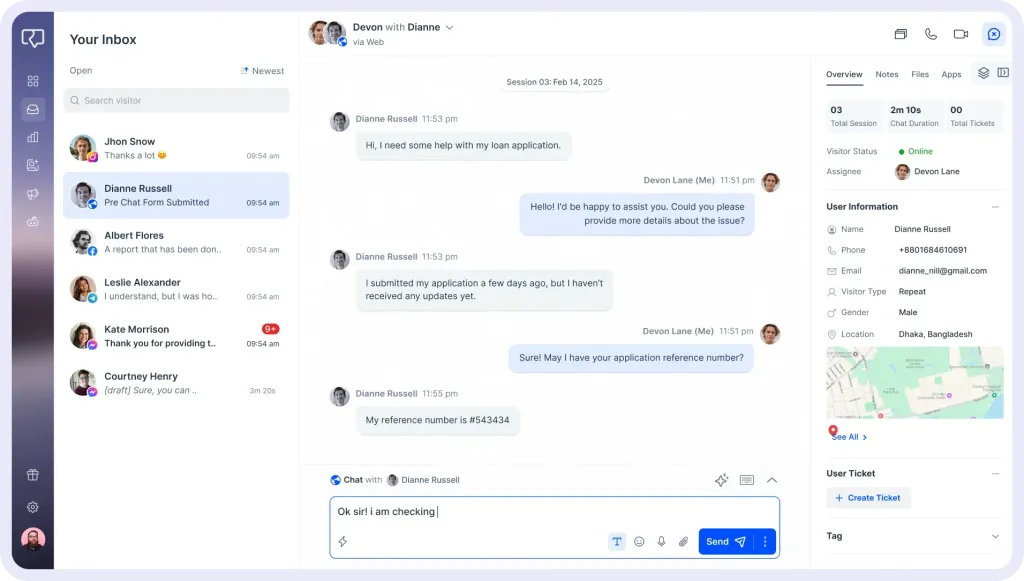
Nobody likes waiting. Live chat lets you answer questions the moment a customer is browsing, like confirming if those sneakers are in stock.
Forrester found 62% of customers return to sites with live chat. Nordstrom uses live chat to guide online shoppers, cutting support tickets and keeping people happy.
It’s like having a virtual salesperson who’s always ready to help.
2. Automate with AI-Powered Chatbots
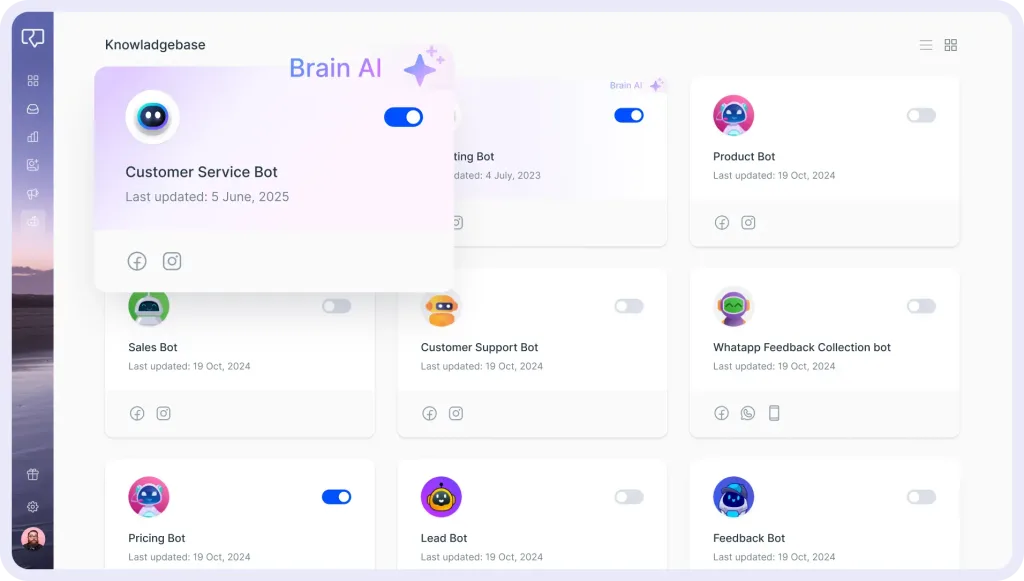
You can’t be online 24/7, but a chatbot can. These AI tools handle FAQs, suggest products, or process returns anytime. Sephora’s chatbot, for example, recommends makeup based on customer preferences, driving sales even at 3 a.m.
REVE Chat’s AI chatbot integrates with platforms like Shopify for personalized replies that feel human, saving you time while keeping shoppers engaged.
3. Offer Multichannel Support
Your customers are all over, such as X, Instagram, phone, email, or in-store.
Be there for them with seamless support across every channel. Warby Parker syncs online chat with in-store help, so customers get the same great experience everywhere.
This keeps shoppers from slipping away and builds trust by showing you’re always within reach.
4. Be Transparent and Avoid Over-Promising
Don’t say “free shipping” if it’s not happening. Honesty is everything. Patagonia’s clear return policy spells out exactly what customers can expect, cutting frustration.
When you’re upfront about delivery times or product details, customers trust you more and stick around longer.
Transparency turns potential headaches into reasons to stay loyal.
5. Practice Active Listening
When a customer’s upset, really listen. Acknowledge their issue and ask questions to show you care.
Apple Store staff are pros at this, calmly troubleshooting and making customers feel valued.
Train your team to listen without cutting in, and you’ll turn frustrated shoppers into loyal fans who appreciate your effort.
6. Address Complaints Proactively
Complaints are going to happen. Don’t dodge them. Fix issues before they snowball. Amazon’s hassle-free returns let customers send items back with a few clicks, turning a negative into a win.
When you tackle complaints fast and fairly, you show customers you’ve got their back, which keeps them coming back.
7. Invest in Staff Training
Your team is your brand’s face. Train them in soft skills like empathy and communication, plus hard skills like mastering your POS system or handling inventory.
Nordstrom’s staff shines by suggesting outfits based on customer style, creating personal connections.
A well-trained team makes every interaction a moment customers won’t forget.
8. Go the Extra Mile
Little gestures go a long way. Think handwritten thank-you notes or tossing in a free sample.
Lush nails this with in-store demos and personalized product picks, making customers feel special.
Going beyond the basics shows you care, and that’s what gets people talking about you.
9. Personalize the Customer Experience
Use data to make every interaction feel like it’s just for them. Starbucks’ app suggests drinks based on past orders, making customers feel known.
With CRM tools, you can track preferences and offer deals that hit the mark. Personalization isn’t just nice. It drives repeat purchases and loyalty.
10. Use Data to Optimize Service
Data is your secret weapon. Track chat histories, feedback, or metrics like response times to see what’s working.
Walmart uses customer data to streamline in-store support, cutting wait times. Analytics tools help you spot common questions.
So, you can tweak your approach and keep customers happy.
11. Craft a Customer-Friendly Return Policy
Returns can make or break trust. Make yours simple and clear. Think no-hassle refunds or extended return windows.
A great return policy shows you stand behind your products, encouraging shoppers to buy with confidence.
12. Actively Seek and Use Customer Feedback
Ask customers what they think, through surveys, reviews, or quick chats, and actually use their input.
For example, Target uses feedback to tweak store layouts, improving the shopping experience.
Feedback shows you care about their opinions, builds trust, and helps you fix pain points before they drive customers away.
Conclusion
Exceptional customer service is the spark that lights up loyalty, keeps shoppers coming back, and grows your reputation like wildfire. You’ve got the strategies, now it’s time to make them work for you.
So, how do you turn this into reality? Start with one step, like adding live chat or listening better to complaints.
Tools like AI chatbots or CRM can make your service fast and personal, even on your busiest days. Keep tweaking based on what your customers say.
You don’t need to be a retail giant to make waves, show you care. Ready to ignite your customer service? Sign up for REVE Chat’s 14-day free trial or explore a free demo to see how their AI-powered tools can transform your business.
Let’s make your store the one everyone talks about.


